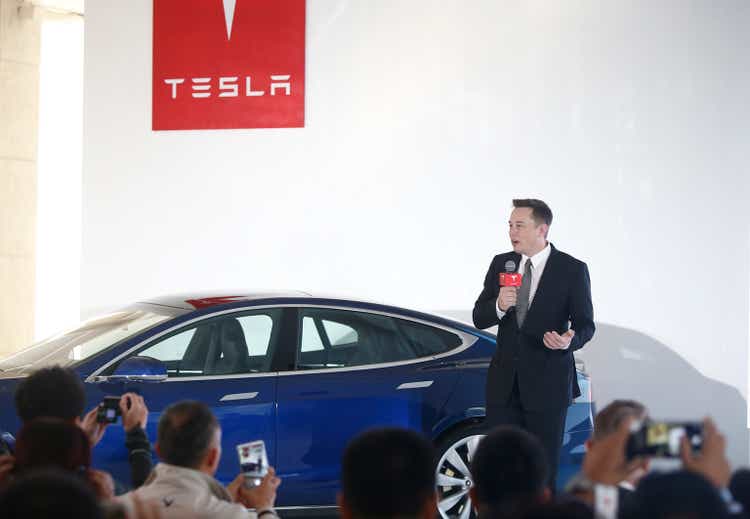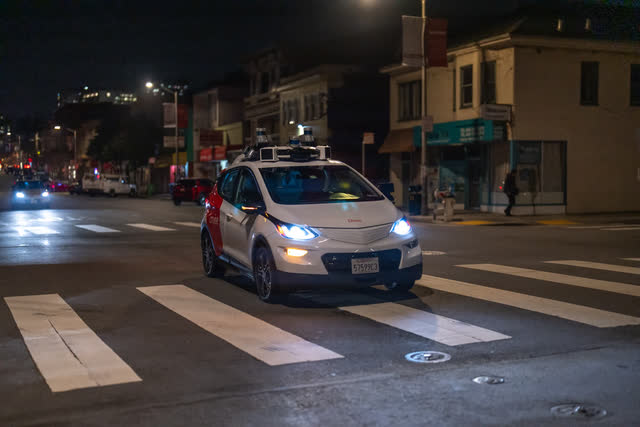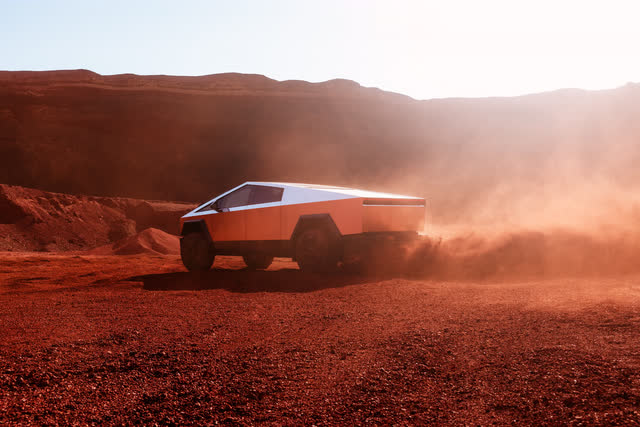Summary:
- The National Highway Traffic Safety Administration has ordered a recall of 2 million Tesla cars to improve safety measures.
- Tesla is introducing FSD12 self-driving technology, which uses neural networks to mimic human decision-making.
- Some experts believe Tesla’s reliance on neural networks is flawed and should be supplemented with other software and sensors.
- A Tesla breakthrough will result in a strong share price runup.
Tesla Update v7.0 Enables Self-driving Test In China. FSD12 Now Under Test By Employees VCG
The National Highway Traffic Safety Administration’s ordered recall of 2 million Tesla cars dating to 2012 this week is a small, important step to improve the safety of vehicles and drivers who either don’t understand that Auto Pilot and Full Self-Driving (“FSD”) are limited or are pushing the limits beyond those stated by the manufacturer.
Tesla’s software already contains safeguards that prevent, for example, drivers from taking their eyes from the road, removing hands from the steering wheel for extended time, or taking pictures while driving. The recall will make those safeguards more stringent.
The much more important development is the issuance this month of Tesla’s FSD12 self-driving technology to company employees for testing. Musk stated in November that FSD12, which he discussed in his biography by Walter Isaacson, would be arriving in “about 2 weeks.”
New approach
The introduction of FSD12 represents a key shift from Tesla’s former self-driving engineering strategy toward the creation of neural networks, a decision-making or artificial intelligence system that functions like a human brain to “see” what is around the vehicle and issue driving commands akin to what a human drive would.
As Isaacson describes FSD12:
“Instead of being based on hundreds of thousands of lines of code, like all previous versions of self-driving software, this new system had taught itself how to drive by processing billions of frames of video of how humans do it, just like the new large language model chatbots train themselves to generate answers by processing billions of words of human text.”
Previously, the development of neural networks was limited by the computing power required to furnish the ten million or more video driving scenarios needed to train artificial intelligence to recognize traffic and road situations presented in real time. According to Tesla, the automaker’s Dojo supercomputer, powered by D1 semiconductors designed in-house and manufactured by Taiwan Semiconductor Manufacturing Co. (TSM), is powerful enough to accomplish the task.
Not everyone is convinced that Tesla is on the right track. Sam Abuelsamid, a principal research analyst leading Guidehouse Insights’ E-Mobility solutions, said Tesla’s approach relying on neural networks is “flawed.” Abuelsamid believes neural networks must be supplemented by more conventional software and sensors other than cameras to provide a comprehensive self-driving solution.
The community of Tesla watchers and investors was agitated a week ago by a Bloomberg report that Ganesh Venkataramanan, head of Dojo, left the company and was replaced Peter Bannon, a former Apple executive. Neither Elon Musk, Tesla CEO, nor the company provided an explanation or details. Tesla is – and has always been – known for high personnel turnover.
In a conventional recall, such as the one announced this week, owners would be summoned to dealerships for a repair or the replacement of a defective part. In Tesla’s case, the recall will consist of an over-the-air (OTA) update of software, usually accomplished at night when most vehicles are not in use.
Surcharge over air
Tesla has been charging owners an extra $6,000 to $12,000 for self-driving software, which allows the vehicles to park themselves and navigate highways and limited access roads. Basic Autopilot and Autosteer offer a form of adaptive cruise control and lane-keeping assist. The features added in the recall will give the driver more warnings when the system senses that attention is wandering, reminding drivers to keep hands on the wheel and eyes on the road. Additional features include automatic overtaking of a slower vehicle by activating the turn signal.
Tesla’s Autopilot and Autosteer features match similar features from competitive automakers, often purchased as options on more expensive versions.
More and more, automakers are moving to what they call “software defined vehicles” or “sdv’s” in what has turned into common auto industry jargon. Digital systems are replacing mechanical systems, which can be deployed by paying a fee and activated by the automaker OTA. The industry increasingly sees SDVs as lowering cost, increasing revenue and profitability by matching vehicle models more precisely with customer tastes and requirements.
The industry can thank Tesla, which has been known mostly as a pioneer in battery-powered EVs, for helping to raise its consciousness toward vehicles that essentially are big computers on wheels – with data (such as for self-driving) and wireless transmission becoming important drivers of its revenue model.
True self-driving will happen
My fundamental investment premise is that full self-driving, what engineering communities terms “level 5” will arrive. Eventually. Tesla may get there first, though the technology is likely to spread widely among automakers. For those who figure out how to exploit self-driving most efficiently – whether they are automakers, mobility providers like Uber or others – a pot of gold awaits.
Progress toward that breakthrough isn’t a straight line. Tesla’s recall constitutes a setback, a warning to the public that Musk has been incautious selling the technology to the public, at least in the eyes of regulators. Tesla’s self-driving software will be corrected and improved; the recall soon will be forgotten.
Another leader in the race toward self-driving, GM’s Cruise affiliate, has suffered an even more serious setback. An accident with injury on October 6, faulty reporting and documentation, suspension of the company’s permit to operate on San Francisco streets and an overhaul of Cruise’s management will be costly for GM.
Cruise announced this week that it is laying off about 900 workers, or about a quarter of its staff. The automaker also said it will reduce spending, confine its pilot program to one city rather than several and appoint new executives to run Cruise, replacing several who had started the company that GM acquired in 2016.
Cruise night ridehail in San Francisco (Cruise)
The Tesla recall resulted in a minor blip downward for the stock price, followed by a massive upswing along with the rest of the stock market. Investors – buoyed by the many Tesla zealots – aren’t worried by recalls or the other safety dramas swirling about the company, not to mention the many kerfluffles that envelope Musk wherever he goes and whatever he touches.
The new Cybertruck will remain a bit of a question mark until enough time goes by to build a decent number and see how a larger base of buyers react to it.
Against the expectations of many smart industry watchers, Tesla keeps surprising, innovating, proving skeptics wrong and raising its net income margin, which stands at 11.18% on a trailing twelve-month basis, up from an average 5.21% for the past five years.
For that reason, I hold my rating on Tesla to BUY for long term investors.
Analyst’s Disclosure: I/we have a beneficial long position in the shares of TSLA either through stock ownership, options, or other derivatives. I wrote this article myself, and it expresses my own opinions. I am not receiving compensation for it (other than from Seeking Alpha). I have no business relationship with any company whose stock is mentioned in this article.
Seeking Alpha’s Disclosure: Past performance is no guarantee of future results. No recommendation or advice is being given as to whether any investment is suitable for a particular investor. Any views or opinions expressed above may not reflect those of Seeking Alpha as a whole. Seeking Alpha is not a licensed securities dealer, broker or US investment adviser or investment bank. Our analysts are third party authors that include both professional investors and individual investors who may not be licensed or certified by any institute or regulatory body.

